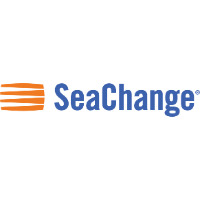
FMP

SeaChange International, Inc.
SEAC
NASDAQ
SeaChange International, Inc. provides multiscreen, advertising, and premium over the top (OTT) video products and services that facilitate the aggregation, licensing, management, and distribution of video and advertising content worldwide. The company offers video products, including video back-office, a software platform that enables content and service providers to manage, monetize and deliver a seamless viewing experience to subscribers across televisions, personal computers (PCs), tablets, smart phones, and other IP-enabled devices; and media asset management software, which is used to receive, manage and publish video content for viewing on televisions, tablets, PCs and other consumer devices. It also provides an advertising platform to maximize advertising revenue across multiscreen, broadcast, on-demand, and OTT viewing. In addition, the company offers client application, a multiscreen user experience product that empower service providers and content owners to optimize live and on-demand video consumption on multiscreen and OTT services. Further, it provides professional, and maintenance and technical support services, as well as managed services. The company sells and markets its products and services through a direct sales process, as well as to systems integrators and value-added resellers. It serves cable system operators, telecommunications companies, and satellite operators, as well as broadcasters and other content providers. The company was incorporated in 1993 and is headquartered in Boston, Massachusetts.
6.5 USD
0 (0%)
